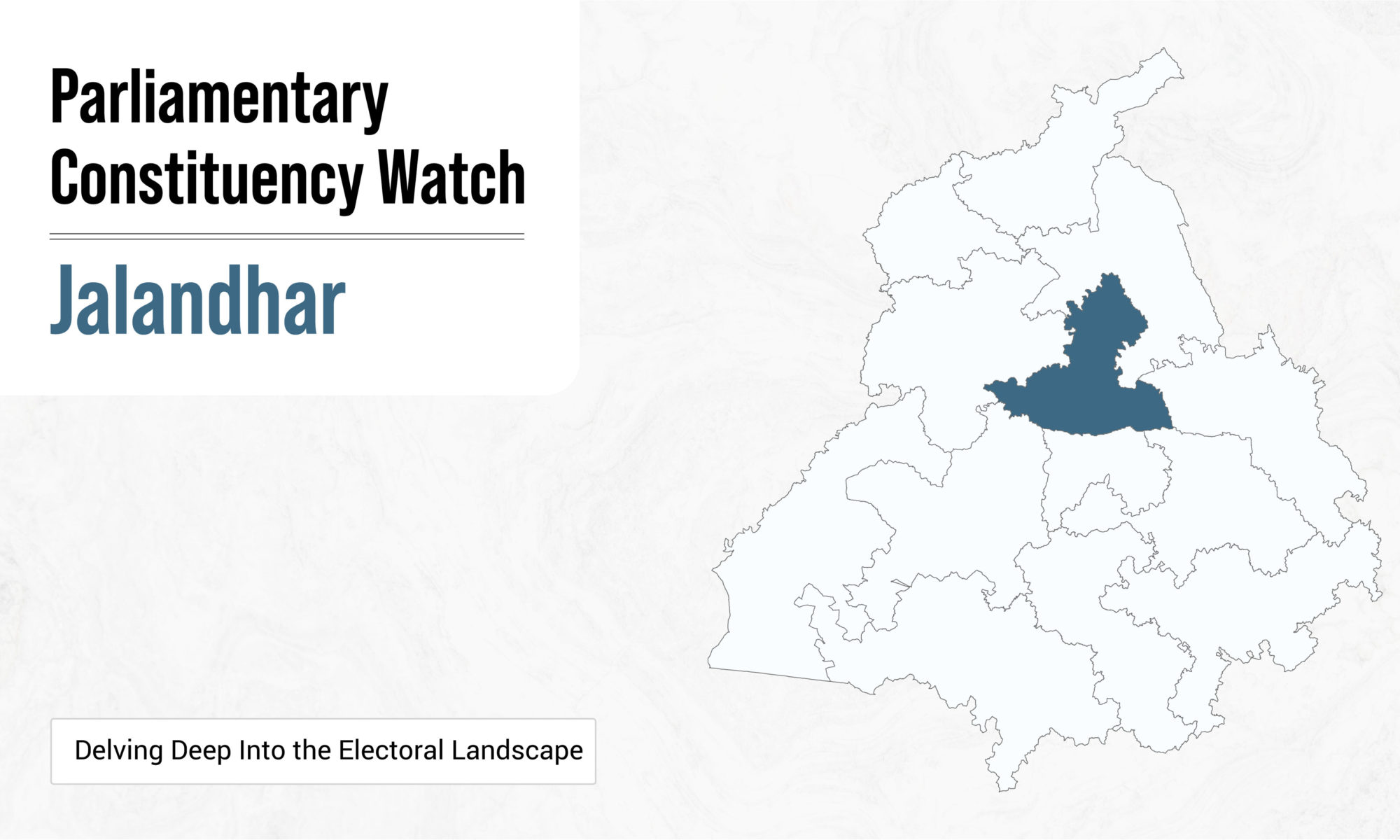Location
Ludhiana Lok Sabha constituency is one of the 13 Lok Sabha constituencies in the Indian state of Punjab. It comprises 9 assembly constituencies and a district.
Category
Designated as a General Constituency.
Voter Turnout
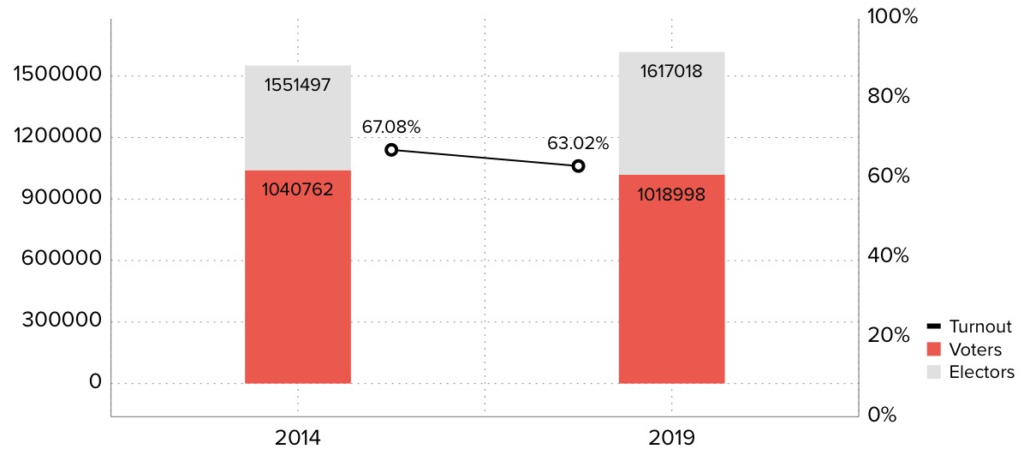
Jalandhar Electoral Turnout Rates
During the 2014 elections, the total number of electors was 15,51,497 and the turnout stood at 67.08%, in real numbers- 10,40,762 voters. 2019 witnessed a turnout decrease; out of the 16,17,018 electors, 63.02% of voters exercised their constitutional rights. In real numbers- 10,18,998 voters.
Representation and Results
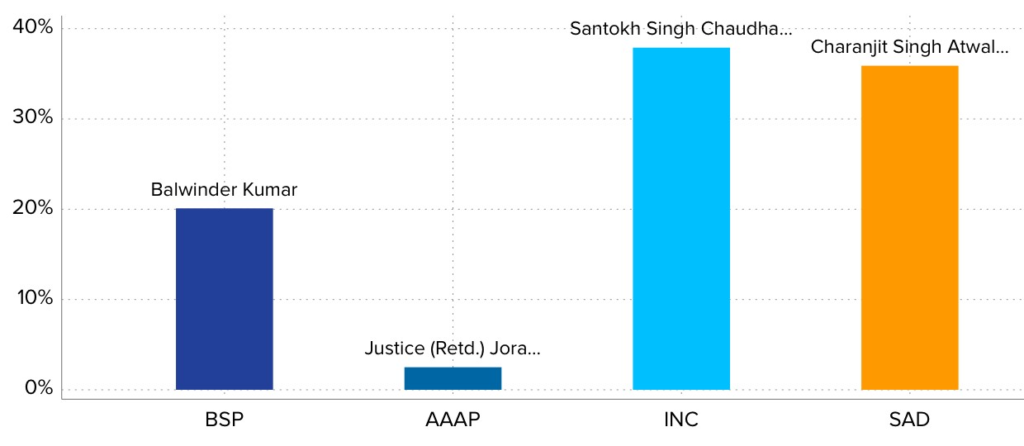
Party Wise Vote Share
2019’s parliamentary election winner, INC’s Santok Singh Chaudhary gained a vote share of 37,90% and defeated BJP’s Charanjit Singh Atwal whose vote share stood at 35.90%. The other prominent candidates in the fray were BSP’s Balwinder Kumar with 20.10% of vote share and AAAP’s Justice(Retd.) Jora with 2.50%.
Voting History –2014 & 2019
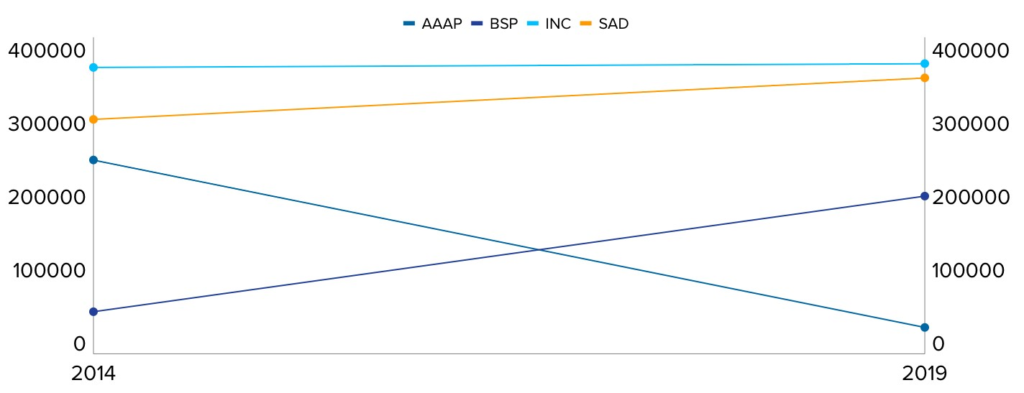
Party Wise Shift in Votes
In 2014, INC won the constituency and earned 3,80,479 votes followed by 3,85,712 votes in the 2019 election victory. On the other hand, BJP garnered 3,09,498 votes in 2014 and 3,66,221 votes in the 2019 elections. BSP received 2,54,121 votes in 2104 and 25,467 votes in 2019.
Parties at helm through the years
The Ludhiana constituency has been represented by a number of different parties over the years.
In 1952, the Indian National Congress (INC) emerged victorious, securing subsequent wins in 1957, 1962, 1967, and 1971. In 1969, a by-election resulted in another win for the INC. In 1969, the INC also emerged triumphant in a crucial by-election. However, the year 1977 brought a change as the Shiromani Akali Dal (SAD) gained power momentarily, only for the INC to reclaim victory in 1980 and 1984. In 1989, the Janata Dal (JD) tasted success, but the INC returned victorious in 1992.

Timeline of Winning Parties
In 1993, another by-election resulted in another win for the INC. In subsequent years, the SAD and JD saw their turn at power in 1996 and 1998, respectively. Nevertheless, the INC made a strong comeback in 1999, 2004, 2009, 2014, and 2019. The political landscape continued to evolve, and in 2023, a new party named AAAP emerged victoriously in a by-election, adding another layer of diversity to the region’s political fabric.
Party-wise success rate
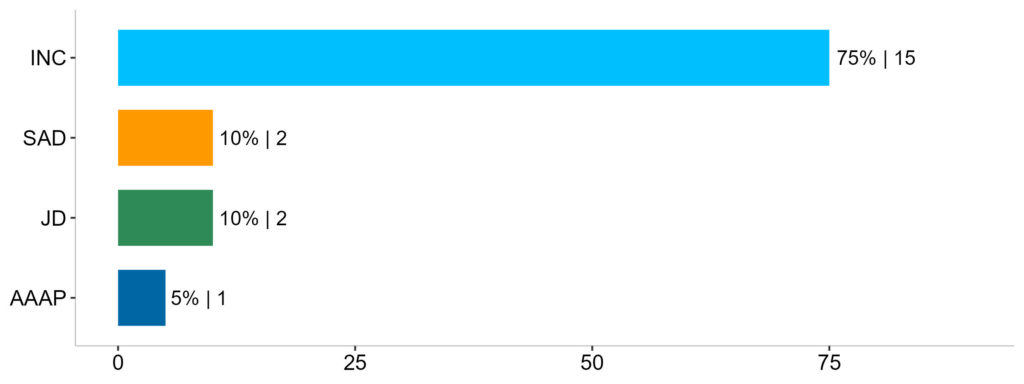
Success Rate
In terms of the success rate in securing the Ludhiana Lok Sabha seat, INC had exhibited the highest rate of success over the years, standing at 75%. Among other prominent parties in the constituency, both SAD and JD enjoyed 10% success rate.
Gender Wise Distribution of Contestants
During the 2009 elections, all 15 contestants were male. However, in the 2014 elections, the total number of contestants increased to 24, with 21 being male and 3 being female. This translated to 88% male candidates and 12% female candidates,

Gender Wise Distribution of Candidates
In the year 2019, there was a notable decrease in the total number of contestants, with the count reducing to 19 individuals. Among these contestants, 18 were males, accounting for a significant 95% of the total, while only 1 contestant was female, representing a smaller percentage of 5%.
Gender wise voter turnout
In 2009, out of a total of 13,37,193 electors, 8,99,395 voters cast their ballots. Of the 6,85,484 male electors, 4,55,127 participated in the election, constituting a turnout rate of 66%. There were 6,51,709 female electors and of that, 4,44,268 chose to vote with a turnout rate of 68%.
In 2014, there are 15,51,497 people who are eligible to vote and 10,40,762 of them chose to exercise their right to vote. Out of these, 8,08,530 were male electors and 7,42,967 were female electors. 66% of male electors (5,32,246) and 68% of female electors (5,08,516) cast their ballots.
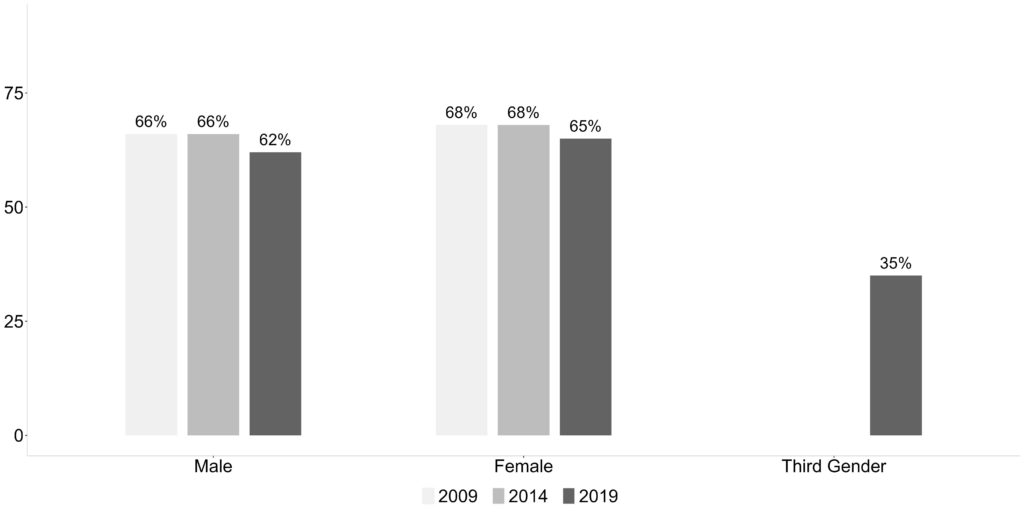
Gender Wise Voter Turnout
The total count of electors in 2019 was 16,17,018 out of which 10,18,209 chose to cast their ballot in the parliamentary elections. Out of 8,43,598 male electors, only 62% voted which is 5,19,020 male voters in real numbers. On the other hand, the voter turnout for females stood at 65% which translates to 4,99,182 voters out of a total of 7,73,400 female electors in real number.
In 2017, transgender people were included as a separate category of the third gender in electoral rolls. There were 20 electors belonging to the third gender category in the parliamentary constituency during the 2019 elections. And 7 of them exercised the newly granted constitutional right to vote and thus their turnout stood at 35%.
Gender-Wise Literacy Rate
We are taking a peek at the gender-wise literacy rate of the Jalandhar district which is part of the Jalandhar parliamentary constituency as literacy is considered an essential indicator of the socioeconomic development of the region.
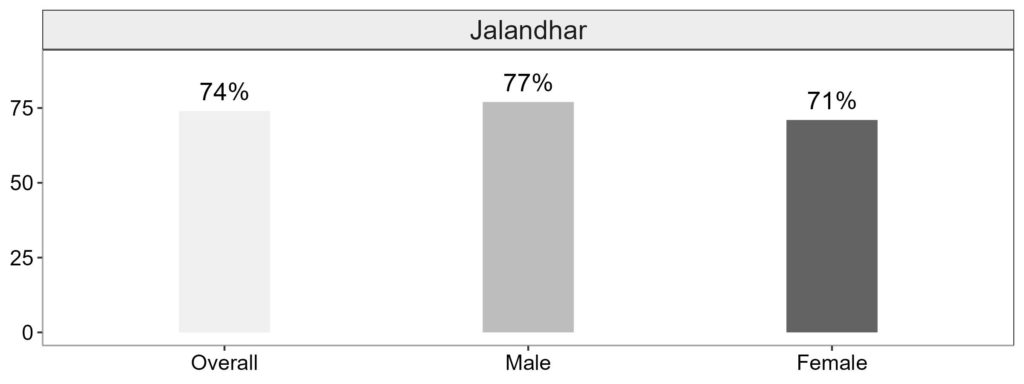
Gender Wise Literacy Rate
Jalandhar District

The 2011 census of India has pegged the overall literacy rate of the district at 74%. Gender-wise, the male literacy rate in the district is 77% whereas, for females, the literacy rate stands at 71%.
Stay updated on the electoral statistics for parliamentary constituencies and the changing dynamics on Meradesh App. Available on Appstore and Play Store.
Reach your constituents, gain insights into their motivations, and build campaigns based on data-driven strategies with the Meradesh Platform.
Data Source – Meradesh.org
